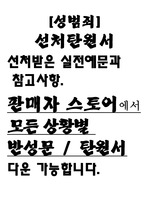경사트레드밀에서 후방보행 훈련이 뇌졸중 환자의 보행에 미치는 영향
* 본 문서는 배포용으로 복사 및 편집이 불가합니다.
서지정보
ㆍ발행기관 : 한국전문물리치료학회
ㆍ수록지정보 : 한국전문물리치료학회지 / 23권 / 3호
ㆍ저자명 : 오용섭, 우영근
ㆍ저자명 : 오용섭, 우영근
목차
Ⅰ. 서론Ⅱ. 연구방법
1. 연구대상자
2. 평가 도구 및 측정방법
3. 연구절차
4. 자료분석
Ⅲ. 결과
1. 연구대상자의 일반적 특성
2. 보행능력변화
3. 시공간적 보행변수 변화
Ⅳ. 고찰
Ⅴ. 결론
References
영어 초록
Background: Gait problems appear in most stroke patients. Commonly, stroke patients show the typical abnormal gait patterns, such as circumduction, genu recurvatum, and spastic paretic stiff-legged gait. An inclined treadmill gait exercise is good for gait problems of stroke patients. In addition, the backward walking training has been recommended in order to improve the component of the movement for the forward walking.Objects: The purpose of this study to investigated the effects of backward walking with inclined treadmill training on the gait in chronic stroke patients.
Methods: A total of 30 volunteers were randomly allocated to two groups that walked on an inclined treadmill: the experimental group (n1=15), which walked backward, and the control group (n2=15), which walked forward. To measure the improvement of the patients’ gait, a Figure of Eight Walking Test (F8W), Four Square Step Test (FSST), and Functional Gait Assessment (FGA) were performed. We also measured spatio-temporal gait variables, including gait speed, cadence, stride length, and single limb support using a three-axial wireless accelerometer. The measurements were taken before and after the experiment. The Wilcoxon signed-rank test was used to compare both groups before and after the interventions. The Mann-Whitney U test was used for the comparisons after the interventions. The statistical significance was set at α=.05.
Results: Before and after experiment, all dependent variables were significantly different between the two groups (p<.05). As compared to the control group, the experimental group showed more significant improvements in F8W, FSST, speed, cadence, stride length, and single limb support (p<.05); however, FGA in this group was not significantly different from the control (p>.05).
Conclusion: Our results suggest that backward walking on an inclined treadmill is more effective for improving the gait of stroke patients than forward walking.
참고 자료
없음"한국전문물리치료학회지"의 다른 논문
 Comparison of Scapular Kinematics During Active Shoulde..8페이지
Comparison of Scapular Kinematics During Active Shoulde..8페이지 Effect of Hip Flexion and Internal Rotation on the Hip ..11페이지
Effect of Hip Flexion and Internal Rotation on the Hip ..11페이지 Effect of Tactile Feedback on Trunk Posture and EMG Act..9페이지
Effect of Tactile Feedback on Trunk Posture and EMG Act..9페이지 Wii Balance Board를 이용한 Sit-to-Stand와 보행기능 측정의 검사-재검사 신뢰..8페이지
Wii Balance Board를 이용한 Sit-to-Stand와 보행기능 측정의 검사-재검사 신뢰..8페이지 비탄력 테이프를 이용한 무부하 테이핑 기법이 턱관절장애 환자의 통증 수준, 개구범위, 기능적 수준,..11페이지
비탄력 테이프를 이용한 무부하 테이핑 기법이 턱관절장애 환자의 통증 수준, 개구범위, 기능적 수준,..11페이지


























